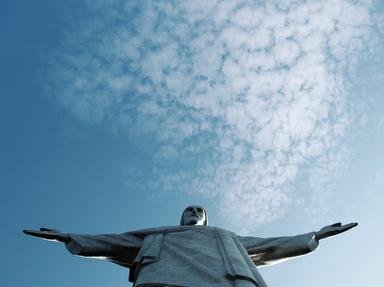Quiz Answer Key and Fun Facts
1. Whose voyage of discovery to the New World in 1492 led to the signing of the Treaty of Tordesillas by Spain and Portugal in 1494?
2. The Catholic Monarchs' claim to the New World in 1492 was challenged because an earlier treaty had ceded the land to Portugal.
3. Which of the following popes, who was also known as Rodrigo Borgia, was asked to mediate the dispute over New World claims between Spain and Portugal?
4. What is the common term used to describe the line that divided the land between Spain and Portugal in the Treaty of Tordesillas?
5. Which of the following statements best describes the unintentional result of the Treaty of Tordesillas?
6. Which country in South America was colonized by Portugal?
7. Which of the following events in history affected the way other countries adherred to the Treat of Tordesillas?
8. What condition was placed on both countries that signed the Treaty of Tordesillas in 1494?
9. Although the Treaty of Tordesillas mostly dealt with colonizing lands in the New World, it was also used to control which of the territories claimed by Portuguese in the Pacific Ocean?
10. Both signatories obeyed the terms of the Treaty of Tordesillas.
Source: Author
ponycargirl
This quiz was reviewed by FunTrivia editor
bloomsby before going online.
Any errors found in FunTrivia content are routinely corrected through our feedback system.

